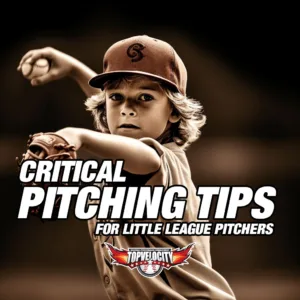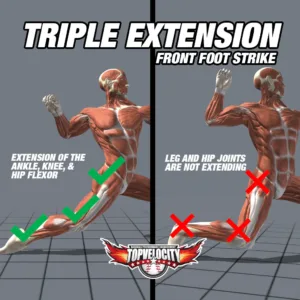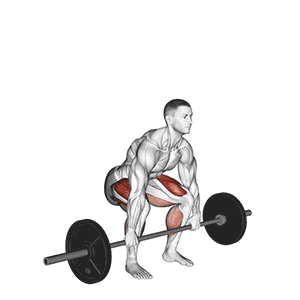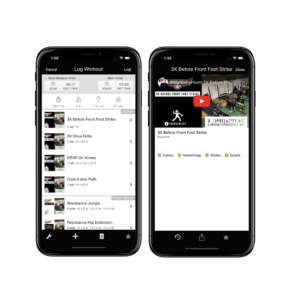 Little League baseball serves as the foundation for many youngsters who dream of becoming professional players someday. It's an arena where kids get their first taste of the sport, learn the rules, and begin to develop their skills. Yet, even at this early stage, it's essential to get the fundamentals right. This article delves deep into offering expert pitching tips specifically designed for Little League players, covering crucial areas like utilizing the lower half of your body, introducing age-appropriate strength training, and managing pitch counts to minimize the risk of overuse injuries.
Little League baseball serves as the foundation for many youngsters who dream of becoming professional players someday. It's an arena where kids get their first taste of the sport, learn the rules, and begin to develop their skills. Yet, even at this early stage, it's essential to get the fundamentals right. This article delves deep into offering expert pitching tips specifically designed for Little League players, covering crucial areas like utilizing the lower half of your body, introducing age-appropriate strength training, and managing pitch counts to minimize the risk of overuse injuries.
Understanding and mastering these elements—how to effectively use your lower half, when to start incorporating weightlifting into your regimen, and how not to overexert your arm—can not only enhance a young player's performance but also set the stage for long-term success. The advice and guidelines provided are rooted in science and years of practical experience, aimed at giving you, the future of baseball, the tools you need for a promising career. Whether you're a player, parent, or coach, the following insights will serve as a comprehensive guide for any Little Leaguer aiming to rise through the ranks.
Mastering the Lower Half: Pitching Tips for Little League
 When it comes to pitching, mastering the use of the lower half of your body can be a game-changer. A well-timed and effective use of your legs, hips, and core can significantly increase the power and accuracy of your pitches. This is often an overlooked aspect of pitching in Little League, where the focus is usually on arm strength and throwing techniques. Here, we explore why the lower half is crucial and introduce some specific drills designed to help you get the most out of your lower body when pitching.
When it comes to pitching, mastering the use of the lower half of your body can be a game-changer. A well-timed and effective use of your legs, hips, and core can significantly increase the power and accuracy of your pitches. This is often an overlooked aspect of pitching in Little League, where the focus is usually on arm strength and throwing techniques. Here, we explore why the lower half is crucial and introduce some specific drills designed to help you get the most out of your lower body when pitching.
The Science Behind Using the Lower Half
The lower half of your body serves as the foundation for generating the energy needed to pitch effectively. When you use your legs, hips, and core correctly, this energy travels up your body, through your arm, and into the ball, leading to a more powerful and controlled pitch. Biomechanically speaking, your lower half is a powerhouse that can help not just in adding velocity but also in reducing the stress and potential damage to your arm.
Importance in Little League
In Little League, young players are still in the early stages of physical development. It's a perfect time to instill the right habits that will benefit them in the long run. Learning to effectively use the lower half can provide a significant advantage over competitors and pave the way for future athletic development.
Drills to Master Your Lower Half: Pitching Tips for Little League
3X Before Front Foot Strike
The 3X Before Front Foot Strike drill is designed to fine-tune the sequencing and timing of your lower half just before the front foot makes contact with the ground. Whether you're a pitcher or a position player, this drill is adaptable for you. As a pitcher, you'll work in a full stride, around 90% of your height, while position players can opt for a slightly shorter stride—about 80% of their height. Position players often rely more on footwork and momentum to generate velocity rather than the driving force from the lower half.
The Setup and Focus
To begin, assume a full stride stance or slightly less if you're a position player. The goal is to maintain your center of gravity low to the ground, which enables the force generated from the ground to be directed more efficiently toward your target. Keep your chin behind the belt buckle and shift your weight to the back leg. From this stance, you will lift your front leg and begin to fall forward and downward at the same rate.
Timing and Indicators
The key here is the timing. Just before your front foot lands, you need to "pop the plate," essentially engaging your back leg to drive force through your entire body. If you're using a "King of the Hill" plate, this would be the moment you hear the plate pop, signifying that you've generated enough force. If you don't have this device, listen for the drive and drag sound of your back foot on the ground, timing it as close as possible to your front foot landing.
Keeping the Upper Body in Check
Throughout this drill, it's crucial to keep your upper body or trunk "loaded back." This means resisting the urge to transfer energy from your trunk too early. Instead, focus solely on the lower half, driving forward and down while keeping your upper body poised and ready for the next phase of the pitch.
Additional Tools for Enhancement
You can also incorporate other tools like VeloPros to help maintain the load on your back leg. These devices can assist in honing your technique and providing sensory feedback, enriching your practice sessions.
By mastering the 3X Before Front Foot Strike drill, you're working on crucial elements like timing, force generation, and sequencing—all aimed at optimizing your lower half for an effective pitch. Whether you're a pitcher focusing on explosive velocity or a position player aiming for quicker, more efficient throws, this drill can be a cornerstone in your training regimen.
3X Drive Drills: Unlocking Propulsion Power in Your Strides
The 3X Drive Drills are a powerful training sequence aimed at maximizing the energy you can generate from your lower half. This drill focuses on linear movement and challenges you to cover a distance that would equate to an elite stride length—about 6 feet or more. Here's how it works.
Setting Up the Drill
To begin, you'll need a cone and a starting point, whether it's a rubber or any marker. Count 20 steps from your starting point; these 20 steps should equate to about 20 feet or more, dependent on your shoe size. If necessary, measure it out with a ruler to be precise. You'll start in a full-stride position with most of your weight on your back leg. Your feet will be open, and you'll be up on the balls of your feet.
The Execution
From the full stride position, lift your front leg, load your weight back, then fall forward and down to initiate the drive. The first drive is critical—make it explosive. After this first drive, you can step your back foot up to your front heel without crossing your feet. Load your weight back again and execute the next drive. It's three drives in a row, each feeding off the momentum of the previous one. It's essential to maintain this momentum to maximize your propulsive energy.
Understanding the Mechanics and Purpose
The core idea here is to generate propulsion energy that moves seamlessly through your stride, originating from your back leg and directing it into your front leg as you make each stride. Interrupting this flow of energy by stopping your momentum can work against you, as you'll have to generate that energy all over again.
Common Mistakes and Remedies
If you find that you're falling short of the 20-foot mark, you may be making some common mistakes like reaching out too much with your front leg, or not getting low enough to leverage your lower body effectively. Correcting these issues can lead to a more powerful and efficient stride, thus fulfilling the objective of the drill.
By integrating the 3X Drive Drills into your training routine, you're building a foundation for powerful, propulsive strides that can significantly enhance your performance on the field. Whether you're pitching or making quick throws as a position player, mastering this drill can be a game-changer.
3X Bounce Drills: Mastering Linear and Lateral Movements for Pitching
The 3X Bounce Drills focus on both linear and lateral movements, targeting the synchronization of your lower and upper halves for better pitching performance. Let's break down each component to understand how to execute these drills effectively.
Initial Positioning
Start with your feet straight, similar to a hitting position, and gradually work towards a larger stride as you progress. Your shoulders should be closed, hands separated, and aligned with your glove side. The objective here is to focus on the separation between your hips and shoulders for optimal energy transfer.
The Linear 3X Bounce
With your feet straight, lift your front leg slightly and initiate a mini drive. As you do so, pull your throwing arm back in horizontal abduction. Essentially, if zero degrees is your arm by your side and 90 degrees is perpendicular, aim for an angle halfway between the two. The drill involves a subtle bounce step: as you drive forward with your hips, pull back with your shoulders. Once you get the hang of it, you can make it a continuous bouncing motion. You can also progress to covering more distance and taking larger strides as you become more comfortable with the movement.
Lateral 3X Bounce
Switching to a lateral position is a bit more challenging. To execute, you'll need to sync your feet, trigger hip rotation, and let your upper half follow the movement. As you open your hips, your upper body will naturally want to follow. Use this momentum to pull your arm back, creating separation between your hip and shoulder movements. Again, you can start with smaller steps, then progress to full strides as you become more adept at maintaining the bounce.
The Objective
Whether you are doing the linear or lateral 3X Bounce, the aim is to maintain a dynamic tension between your lower and upper halves. The lower half pushes forward, while the upper half pulls back, creating an efficient energy flow for effective pitching.
By incorporating these 3X Bounce Drills into your training, you can refine the kinetic chain involved in pitching, thereby improving both your power and control. Remember, start small and gradually increase the complexity as you become comfortable with the timing and the movements involved.
Lifting Young: Pitching Tips for Little League
 As baseball athletes, especially young players, strive to maximize their potential, it's crucial to pay attention to physical development. Strength training, commonly referred to as 'lifting,' is an essential component for preparing the body for performance. However, incorporating weightlifting or resistance training in younger athletes requires specialized guidance. Here's how to do it right.
As baseball athletes, especially young players, strive to maximize their potential, it's crucial to pay attention to physical development. Strength training, commonly referred to as 'lifting,' is an essential component for preparing the body for performance. However, incorporating weightlifting or resistance training in younger athletes requires specialized guidance. Here's how to do it right.
Importance of Strength Training: Pitching Tips for Little League
- Injury Prevention: Strength training helps build muscle around critical joints like the elbows and shoulders, reducing the risk of overuse injuries common in baseball, especially pitching.
- Enhanced Performance: Increased muscle strength contributes to better throwing velocity, hitting power, and overall athletic ability.
- Endurance: The rigors of a baseball game or season can be taxing on the body; strength training helps you endure the physical stresses over a longer period.
Age-Appropriate Training: Pitching Tips for Little League
For players below the age of 13, the focus should not be on heavy lifting but rather on learning the basics of good movement, agility, and simple body-weight exercises.
- Elementary School (7-10 years): Emphasis should be on general athleticism. Exercises like push-ups, sit-ups, and agility ladders are good starts.
- Middle School (11-13 years): Introduce light resistance training with bands or low weights, concentrating on technique over the amount lifted.
- High School and Beyond (14+ years): As athletes mature, they can begin more advanced strength and resistance training programs tailored to their specific positions and needs.
Specialized Drills for Baseball: Pitching Tips for Little League
- Core Workouts: Enhancing core strength can significantly improve a player's ability to transfer energy efficiently during hitting and pitching.
- Leg Workouts: Exercises like squats and lunges help in strengthening the legs, which are the powerhouses for any throwing or hitting action.
- Upper Body: Incorporate exercises like bench press and lat pull-downs, but don't overlook the importance of rotator cuff exercises for shoulder stability, especially crucial for pitchers.
Safety First: Pitching Tips for Little League
- Supervision: Always have a certified trainer supervise young athletes during strength training to ensure proper form and prevent injuries.
- Rest: Rest is as crucial as the training itself. Make sure to have enough intervals between training sessions to allow the body to recover.
- Nutrition and Hydration: Proper diet and ample hydration are essential to support an active training routine and to help in recovery.
 Periodization and Planning: Pitching Tips for Little League
Periodization and Planning: Pitching Tips for Little League
Develop a yearly plan that incorporates strength training as an integral part of your overall athletic development. This plan should be flexible to adapt to in-season and off-season demands, school commitments, and other life factors.
Incorporating strength training as part of a young athlete's development plan is not just about lifting weights. It's about creating a comprehensive, age-appropriate system that advances an athlete's physical capabilities alongside their skills, making them not just better players but more complete athletes.
Avoiding Overpitching: Pitching Tips for Little League
The drive to excel on the mound is innate in most baseball pitchers, especially those who are younger and more ambitious. While the urge to throw that perfect game or achieve that elusive no-hitter is commendable, it's essential to remember the potential risks associated with overpitching. Here, we dive deep into the science and practice of how to balance passion with caution to ensure a long, successful, and injury-free career.
The Multifaceted Risks of Overpitching: Pitching Tips for Little League
 Physical Risks
Physical Risks
- Muscle Strain: Overpitching can lead to muscle imbalances and strains that, if not addressed, can turn into more severe injuries.
- Ligament Damage: Consistent overuse can weaken the ligaments, making them more susceptible to tears.
- Rotator Cuff Injuries: The rotator cuff is highly susceptible to wear and tear from overpitching, and injuries here can be career-ending in severe cases.
Psychological Risks
- Mental Fatigue: Overpitching can also take a toll mentally, leading to burnout or a decline in the love for the game.
- Performance Anxiety: The constant pressure to perform at an optimal level without adequate rest can lead to performance anxiety.
Metrics to Monitor
- Arm Fatigue: Keep an eye on how your arm feels before, during, and after a game.
- Pitch Metrics: Use technology to track pitch velocity, spin rate, and other metrics. A decline here could signify fatigue.
- Biomechanical Analysis: Leveraging biomechanical analysis can identify shifts in your pitching form, which can be indicators of fatigue or potential injury.
Managing Pitch Counts Across Different Age Groups
- Children (7-12 years): Stick to 50-70 pitches per game with adequate rest days.
- Adolescents (13-18 years): A maximum of 80-100 pitches is advisable, again, with enough rest.
- Adults: Even with increased stamina, adults should aim for a ceiling of around 100-120 pitches, with proper rest and rotation.
Preventative Strategies
Training Regimen
- Periodization: This involves breaking your training schedule into different cycles to manage the intensity and focus on varied aspects of pitching.
- Resistance Training: Incorporate resistance band exercises to build endurance without putting too much strain on the muscles.
Nutritional Approaches
- Hydration: Staying hydrated is crucial, especially for pitchers who are prone to muscle fatigue.
- Supplements: Consult with healthcare providers to consider supplements like protein or BCAAs to aid recovery.
Recovery Protocols
- Ice Baths: Consider ice baths or cold therapy to reduce muscle inflammation.
- Compression Gear: Use compression sleeves or wraps post-game to enhance blood flow and speed up recovery.
Involvement of Coaching Staff and Medical Team
Open and honest communication between the player, coaching staff, and medical team is paramount for effective management of pitch counts and associated risks. Regular check-ins and medical evaluations can provide a more rounded picture of a player’s physical state.
Technology in Balancing Passion and Caution
From wearables that monitor muscle fatigue to motion-capture systems that offer real-time biomechanical feedback, technology plays a vital role in modern baseball training. By leveraging these tools, players can gain insights into their body's limits, helping them make more informed decisions about their game-time actions.
Join TopVelocity Patreon Pro for Unmatched Pitching Mastery
 Why Settle for Good When You Can Be Great?
Why Settle for Good When You Can Be Great?
Your ambition and love for the game have brought you this far. Now, take the next leap in your pitching career with TopVelocity Patreon Pro. If you're serious about reaching the pinnacle of your performance while optimizing health and longevity, this is the platform you've been waiting for.
What You'll Get
- Exclusive Pitching Tips: Unlock advanced strategies and tips that are not available anywhere else.
- Remote Coaching: Benefit from one-on-one remote coaching sessions, allowing you to refine your skills under expert guidance no matter where you are.
- Video Analysis: Our seasoned professionals will dissect your pitching videos, offering nuanced insights and personalized action plans.
- Community Access: Network and share knowledge with a community of like-minded individuals who are as committed to excellence as you are.
Specialized Programs and Resources
From biomechanics to mental conditioning, our Patreon Pro members receive the cream of the crop in specialized content. You'll get exclusive access to webinars, downloadable resources, and even some of our secret sauce—the drills and exercises that have transformed underdogs into champions.
Technology Meets Talent
Your subscription also brings cutting-edge technology to your fingertips. Monitor your progress in real-time with our advanced analytics features, providing a quantitative measure of your journey to pitching greatness.
Be Part of the Revolution
This is not just another subscription; it's an investment in your future. We have a proven track record of helping athletes break through barriers, and now it's your turn.
Take Action Now!
If you're committed to evolving your game, reducing the risk of injury, and unlocking your full potential, click the link below to join the TopVelocity Patreon Pro community today.
👇👇👇
Join TopVelocity Patreon Pro Now!
Don't miss this opportunity to stand shoulder to shoulder with the best in the business. Together, let's redefine what's possible in the world of baseball pitching.


 Periodization and Planning: Pitching Tips for Little League
Periodization and Planning: Pitching Tips for Little League Physical Risks
Physical Risks Why Settle for Good When You Can Be Great?
Why Settle for Good When You Can Be Great?

